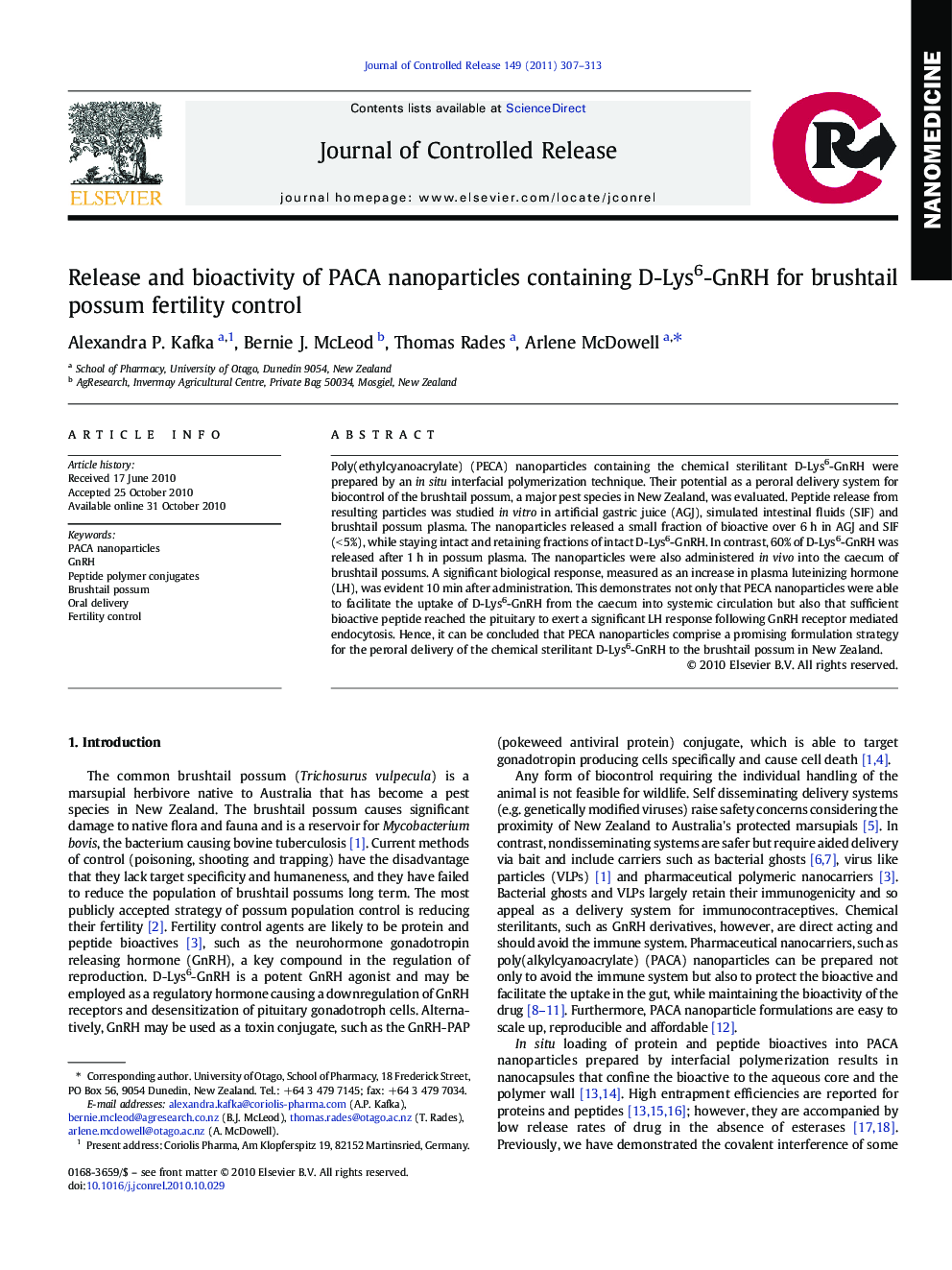| Article ID | Journal | Published Year | Pages | File Type |
|---|---|---|---|---|
| 1425591 | Journal of Controlled Release | 2011 | 7 Pages |
Poly(ethylcyanoacrylate) (PECA) nanoparticles containing the chemical sterilitant D-Lys6-GnRH were prepared by an in situ interfacial polymerization technique. Their potential as a peroral delivery system for biocontrol of the brushtail possum, a major pest species in New Zealand, was evaluated. Peptide release from resulting particles was studied in vitro in artificial gastric juice (AGJ), simulated intestinal fluids (SIF) and brushtail possum plasma. The nanoparticles released a small fraction of bioactive over 6 h in AGJ and SIF (< 5%), while staying intact and retaining fractions of intact D-Lys6-GnRH. In contrast, 60% of D-Lys6-GnRH was released after 1 h in possum plasma. The nanoparticles were also administered in vivo into the caecum of brushtail possums. A significant biological response, measured as an increase in plasma luteinizing hormone (LH), was evident 10 min after administration. This demonstrates not only that PECA nanoparticles were able to facilitate the uptake of D-Lys6-GnRH from the caecum into systemic circulation but also that sufficient bioactive peptide reached the pituitary to exert a significant LH response following GnRH receptor mediated endocytosis. Hence, it can be concluded that PECA nanoparticles comprise a promising formulation strategy for the peroral delivery of the chemical sterilitant D-Lys6-GnRH to the brushtail possum in New Zealand.
Graphical AbstractFigure optionsDownload full-size imageDownload as PowerPoint slide
